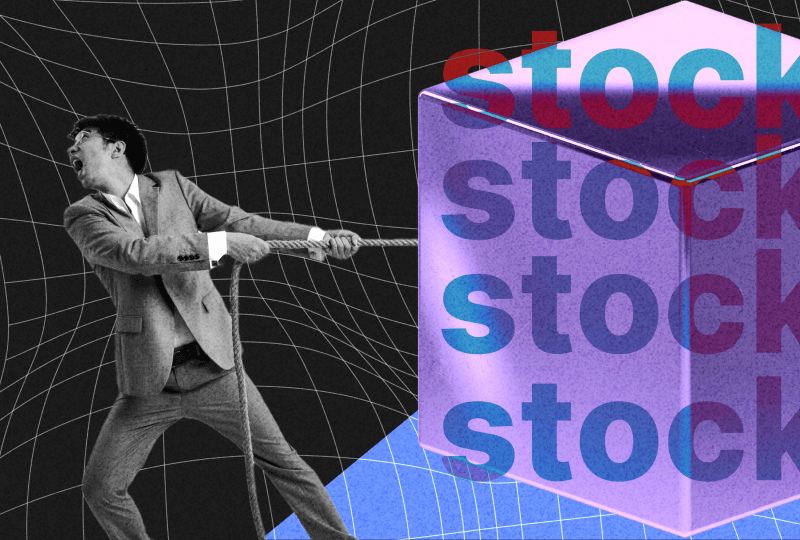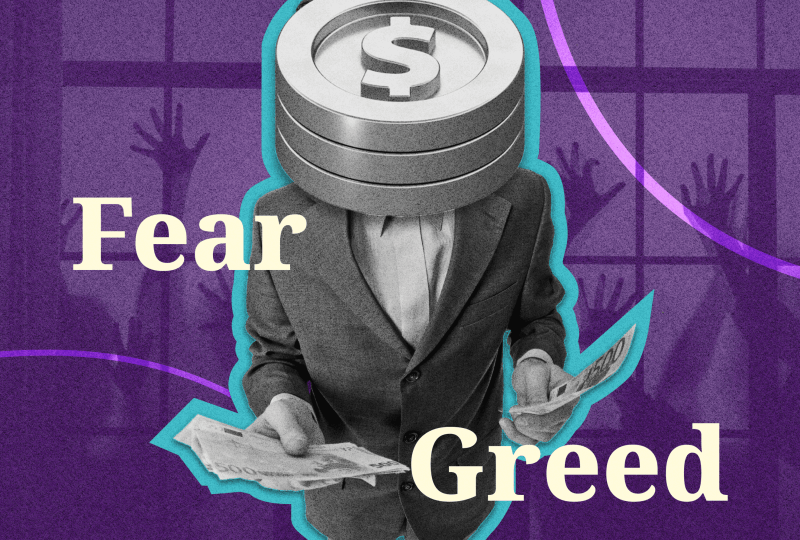Stock Market News Live Updates: Stocks Mixed After Two-Day Rally Amid Pfizer’s Omicron Vaccine Update
Dec 08, 2021

Stocks traded neutral, taking a breather following a two-day rise, as investors continued to consider more information on the Omicron strain and assessed the possibility of a Federal Reserve policy shift.
A day earlier, equities of tech companies outperformed, propelling the Nasdaq up by more than 3%, its strongest day since March. As of Tuesday's closing, the S&P 500 was less than 0.5% lower than it had been on Nov. 24, the day before the World Health Organization announced the finding of the Omicron.
Treasury rates stabilized after a spike on Tuesday, with the 10-year Treasury note yielding slightly under 1.5%. U.S. West Texas Intermediate crude oil futures held near $71 per barrel, and Иitcoin fell back to the $50,000 mark.
Investors flocked to risky assets this week amid the prospect that the Omicron may not represent as serious a health danger as originally thought. At the same time, recent events in Washington, D.C., showed lawmakers are on their way to increasing the debt limit before Dec. 15. If the deadline is not prolonged, the U.S. Treasury will be left with insufficient money to pay holders of U.S. debt.
Pfizer's (PFE) stock rose modestly after the firm said that three doses of its Pfizer-BioNTech (BNTX) vaccine "neutralize" the Omicron strain, but that two doses "may not be adequate to prevent infection." Other latest changes around the virus have also been positive, as Dr. Anthony Fauci told the AFP on Tuesday that the effects of the Omicron strain are "almost certainly" no more serious than those of the previous Delta variant.
Brent Schutte, the chief investment strategist for Northwestern Mutual, believes that economic growth will be robust. Given the underlying foundations, the Omicron form might squeeze that growth somewhat, but it might not remove it. Although the Fed will undoubtedly concentrate more on tapering— which scared the market, the question is what influence this will have on economic growth. As Brent Schutte said, the answer is not clear. Next year, according to Brent Schutte, there will still be a strong U.S. economy due to the resumption of work, on the back of all the cash that is still on the balance sheet of consumers.
Other experts shared this opinion.
Emily Roland, the co-chief investment strategist at John Hancock investment management, thinks the underlying support for markets to keep rising here. Indeed, some events have scared investors in the last week: the discovery of the Omicron type and the Fed's shift, possibly seeing them accelerate asset purchases cuts. However, it can be concluded that the economy is doing well.
"So, unless it appears like we are approaching a recession here, which is not true, it is difficult for us to get very protective. We resume embracing stocks; the United States equities are preferred because they have the strongest relative economic growth and profits. And, once again, there is a large amount of capital waiting on the sideline to be put to use," Emily Roland added.
Stocks traded neutral, taking a breather following a two-day rise, as investors continued to consider more information on the Omicron strain and assessed the possibility of a Federal Reserve policy shift.
A day earlier, equities of tech companies outperformed, propelling the Nasdaq up by more than 3%, its strongest day since March. As of Tuesday's closing, the S&P 500 was less than 0.5% lower than it had been on Nov. 24, the day before the World Health Organization announced the finding of the Omicron.
Treasury rates stabilized after a spike on Tuesday, with the 10-year Treasury note yielding slightly under 1.5%. U.S. West Texas Intermediate crude oil futures held near $71 per barrel, and Иitcoin fell back to the $50,000 mark.
Investors flocked to risky assets this week amid the prospect that the Omicron may not represent as serious a health danger as originally thought. At the same time, recent events in Washington, D.C., showed lawmakers are on their way to increasing the debt limit before Dec. 15. If the deadline is not prolonged, the U.S. Treasury will be left with insufficient money to pay holders of U.S. debt.
Pfizer's (PFE) stock rose modestly after the firm said that three doses of its Pfizer-BioNTech (BNTX) vaccine "neutralize" the Omicron strain, but that two doses "may not be adequate to prevent infection." Other latest changes around the virus have also been positive, as Dr. Anthony Fauci told the AFP on Tuesday that the effects of the Omicron strain are "almost certainly" no more serious than those of the previous Delta variant.
Brent Schutte, the chief investment strategist for Northwestern Mutual, believes that economic growth will be robust. Given the underlying foundations, the Omicron form might squeeze that growth somewhat, but it might not remove it. Although the Fed will undoubtedly concentrate more on tapering— which scared the market, the question is what influence this will have on economic growth. As Brent Schutte said, the answer is not clear. Next year, according to Brent Schutte, there will still be a strong U.S. economy due to the resumption of work, on the back of all the cash that is still on the balance sheet of consumers.
Other experts shared this opinion.
Emily Roland, the co-chief investment strategist at John Hancock investment management, thinks the underlying support for markets to keep rising here. Indeed, some events have scared investors in the last week: the discovery of the Omicron type and the Fed's shift, possibly seeing them accelerate asset purchases cuts. However, it can be concluded that the economy is doing well.
"So, unless it appears like we are approaching a recession here, which is not true, it is difficult for us to get very protective. We resume embracing stocks; the United States equities are preferred because they have the strongest relative economic growth and profits. And, once again, there is a large amount of capital waiting on the sideline to be put to use," Emily Roland added.
4:09 p.m. ET: Stocks climb for the third day in a row after Pfizer announces that the third dose of vaccination could beat Omicron.
The following were the major market movements as of 4:09 p.m. ET:
1) S&P 500 (^GSPC): +14.46 (+0.31%) to 4,701.21
2) Dow (^DJI): +35.32 (+0.10%) to 35,754.75
3) Nasdaq (^IXIC): +100.07 (+0.64%) to 15,786.99
4) Crude (CL=F): +$0.54 (+0.75%) to $72.59 a barrel
5) Gold (GC=F): +$2.10 (+0.12%) to $1,786.80 per ounce
6) 10-year Treasury (^TNX): +2.9 bps to yield 1.5090%
11:11 a.m. ET: Crude oil inventories fell less than predicted last week, according to the EIA.
The Energy Information Administration stated in its weekly report on Wednesday that crude oil stocks in the United States fell by 241,000 barrels last week.
According to Bloomberg statistics, the total was significantly less dramatic than the 1.521 million barrel reduction expected by analysts. According to the weekly report, oil imports declined by 105,000 BPD, while crude production grew by 100,000 BPD.
West Texas Intermediate crude oil futures in the United States fell by roughly 0.3% Wednesday morning, giving up some of their gains after rising by 3.7% on Tuesday and 4.9% on Monday. Brent crude oil futures, the international benchmark, fell by roughly the same amount, hovering just above $75 per barrel.
10:00 a.m. ET: Job openings climb to a near-record high in October
Job vacancies in the United States increased by a larger-than-expected margin in October, highlighting the still-widespread mismatches in labor supply and demand as shortages persist.
According to Bloomberg statistics, the Labor Department stated Wednesday that job postings in the United States totaled 11.033 million in October, above consensus analysts' projections of 10.469 million. In September, the number of job openings increased up to 10.602 million from 10.438 million originally reported.
The quit rate fell just marginally in October, to 2.8%, compared to September's all-time peak of 3.0%.
9:30 a.m. ET: Stocks open higher on the back of Pfizer vaccine data.
Stocks were neutral and fell from overnight peaks as investors digested new information on Pfizer's COVID-19 vaccine and its potency against the Omicron strain.
The Dow gained more than 100 points or 0.3%, in trading. The S&P 500 remained unchanged, while the Nasdaq fell 0.2%.
Small-cap stocks increased sharply, with the Russell 2000 index rising by more than 2%.
ET 7:32 a.m. Wednesday: Equities are rising for the third day in a row.
Here's where the stocks were trading before the opening:
1) S&P 500 futures (ES=F): +13.5 points (+0.29%), to 4,698.50
2) Dow futures (YM=F): +114.00 points (+0.32%), to 35,827.00
3) Nasdaq futures (NQ=F): +39.75 points (+0.24%) to 16,357.75
4) Crude (CL=F): -$0.01 (-0.01%) to $72.04 a barrel
5) Gold (GC=F): +$1.00 (+0.06%) to $1,785.70 per ounce
6) 10-year Treasury (^TNX): -0.8 bps to yield 1.472%
ET 6:06 p.m. Tuesday: Stock futures on a rise
The following were the major market changes in late trade on Tuesday:
1) S&P 500 futures (ES=F): +3 points (+0.06%), to 4,688.00
2) Dow futures (YM=F): +9 points (+0.03%), to 35,722.00
3) Nasdaq futures (NQ=F): +21.5 points (+0.13%) to 16,339.5




